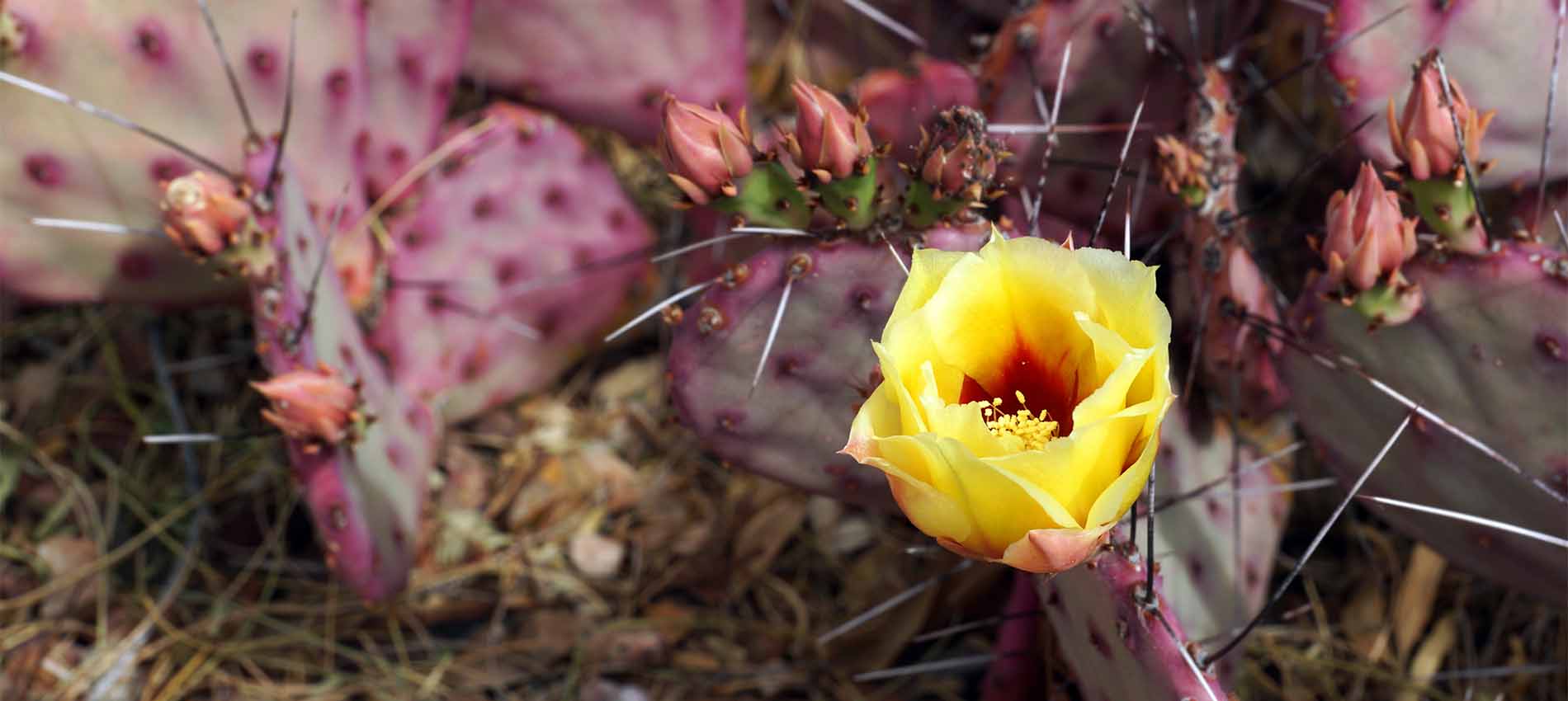This is the second in our weekly series on regional native plants and what you should know going into the growing season. Visit www.lawnstarter.com for more tips on lawn care and local businesses in your area.
If you live in the American Midwest or Southwest, you are surely no stranger to the difficulties of trying to maintain a luscious, verdant garden. It can be incredibly hot and dry, making it tough to cultivate many strands of ornamental plants.
By incorporating native plants into your landscaping, you’ll find an easier task on your hands. Native plants tend to stand up better to the pressures of arid, warm conditions, and will make a natural, easy-to-manage addition to your landscaping. Consider planting one of these beautiful strands in your garden or around your home this year.
Texas lantana
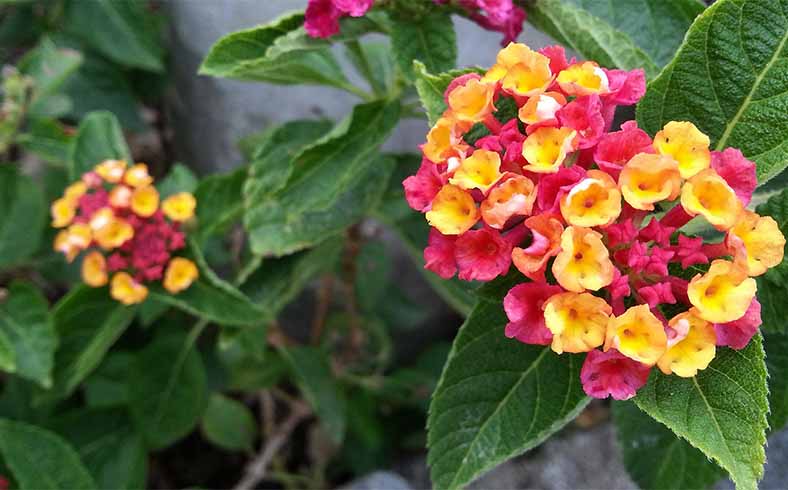
- Scientific name: Lantana urticoides
- Sunlight: Full
- Moisture: Dry
- Bloom time: April–October
- Height: 3-10 ft.
- Width: 3-6 ft.
- Appearance: Orange, red and yellow tubular flowers
- Attracts: Birds and butterflies
Contrary to its name, this native plant of Texas can commonly be found in the southern Hardiness Zones of 8a, which is most of the Southeast and Southwest. This ornamental shrub produces bright fruits that attract both birds and butterflies. It grows well in most types of soils and growing conditions, and can tolerate persistent heat and drought.
Autumn sage

- Scientific name: Salvia greggii
- Sunlight: Full
- Moisture: Dry
- Bloom time: March–November
- Height: 2-3 ft.
- Width: 1-3 ft.
- Appearance: Flowers are red, pink, purple, orange or white.
- Attracts: Hummingbirds
Autumn sage grows best on rocky slopes and produces beautiful evergreen foliage in warmer climates. It works well in a perennial bed or low hedge. Because it is aromatic, it attracts hummingbirds and repels insects and most diseases. It requires no fertilization and is easy to maintain over multiple years.
Desert savior
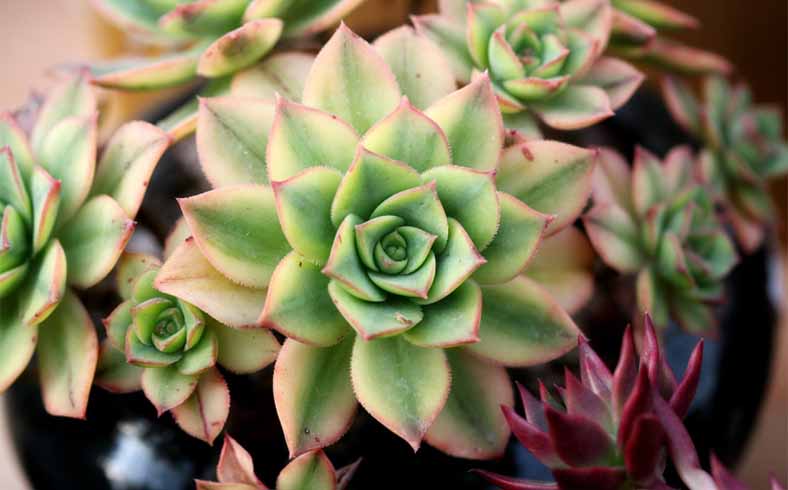
- Scientific name: Echeveria strictiflora
- Sunlight: Full to partial shade
- Moisture: Dry
- Bloom time: June–August
- Height: 6 in.
- Width: 6 in.
- Appearance: Fleshy leaves with scarlet flowers, rosettes and tips
This rosette-forming succulent requires little moisture, but good drainage. Native to open, rocky slopes, it works well as a rock or container garden plant. Succulents are a unique addition to any garden and require, and actually thrive under, very little maintenance.
Santa Rita prickly pear
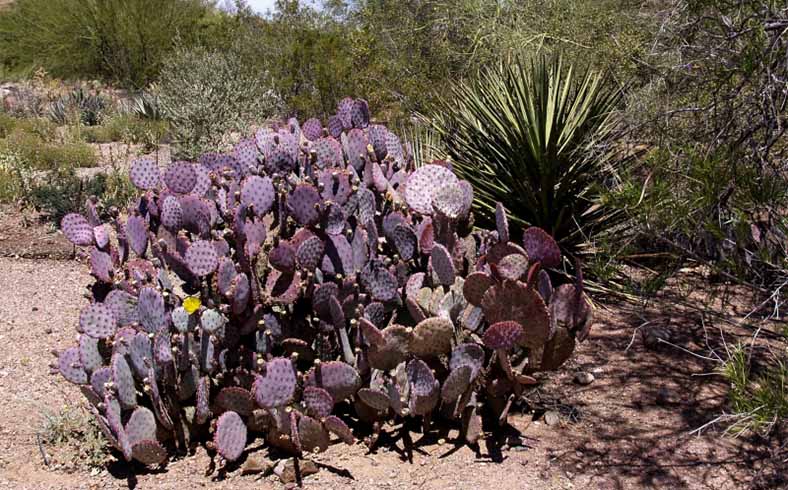
- Scientific name: Opuntia santa-rita
- Sunlight: Full to partial shade
- Moisture: Dry
- Bloom time: Spring
- Height: 7-8 ft.
- Width: 8-10 ft.
- Appearance: Purple-gray pads, with yellow flowers that bloom in spring
- Attracts: Birds
This low-maintenance plant boasts a wide variety of benefits. Not only does it attract several species of birds, it is also deer-resistant as a result of its spiny growths. It tolerates a high level of urban pollution, as well as dry conditions once established, and acts as a nice centerpiece in rock or cactus gardens. It is frost hardy and attractive in the garden throughout the entire year.
Tufted evening-primrose
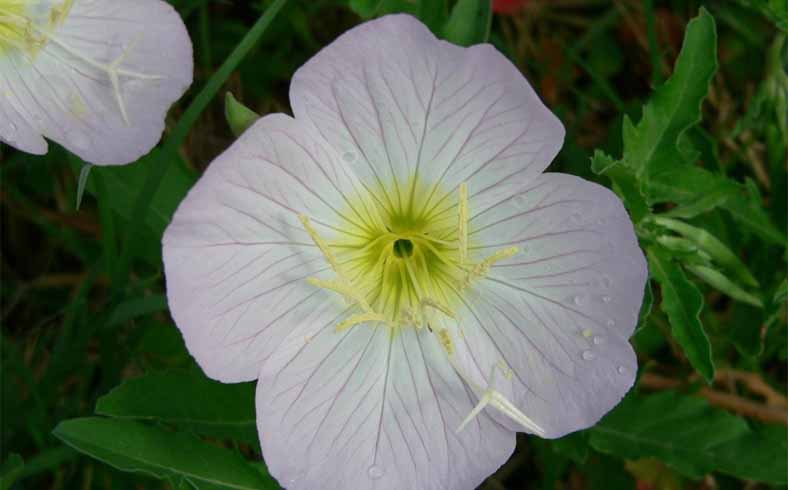
- Scientific name: Oenothera caespitosa
- Sunlight: Full
- Moisture: Average
- Bloom time: April–August
- Height: 1-2 ft.
- Width: 1-6 ft.
- Appearance: White flowers with yellow center and stamens
- Attracts: Birds and bees
This showy Arizona flower produces rosettes of leaves with pointed, somewhat “tufted” tips. Flowers open in late afternoon and close in the morning, changing colors between pink and reddish violet. In some cases, this plant can be a perennial. This plant’s sweet scent makes it a welcome addition to any home or community garden. In addition, the roots of this plant can be pounded and used as a poultice for wounds and inflammation.
Emily Higgins is a writer and homeowner inspired by retro pinup–she is constantly working on revamping her fixer upper to have a more chic vintage style. When she’s not working on remodeling, she can be found tending to her organic garden and cooking for family and friends.
